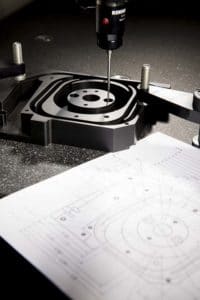
Self lubricating plastic has become a buzzword in the industry, leading to a misunderstanding of what the term actually means. Without a clear understanding of the uses and limits of self lubricating plastic bearings, companies can misuse the product and end up facing failures, downtime, and productivity losses. The experts at Reading Plastic are here to provide you with a clear definition of self lubricating plastic and its benefits.
For a material to be considered self lubricating, it must meet the following criteria:
As the name implies, self lubricating plastic bearings must provide lubrication throughout the life of the system without needing an external source of lubrication. The bearing achieves this by transferring microscopic amounts of material to the mating surface, creating a film that lubricates and reduces friction over the entire length of the rail or shaft. This ability is manufactured into the bearing material at its creation.
The initial transfer of material to the mating surface is known as the break-in period. How much bearing material is affected during the transfer depends on several factors, including the speed, load, and length of stroke. An initial transfer process is normally completed in 50-100 strokes of continuous operation. Once the break-in is completed, the transfer process enters the secondary, ongoing phase where self lubrication is most effective.
Self lubricating plastic bearings perform extremely well in applications where excessive friction is a concern. They ensure clean, maintenance-free operation in the toughest environments. If you are looking for quality self lubricating or low friction plastics, call the experts at Reading Plastic Machining & Fabrication: 610-926-3245. For nearly four decades, we have been providing companies with the high-end machined plastic parts they need. We create parts from advanced engineered plastics with tight tolerances that rival those of metal parts.